Table of contents
What is the role of symbols in tattooing?
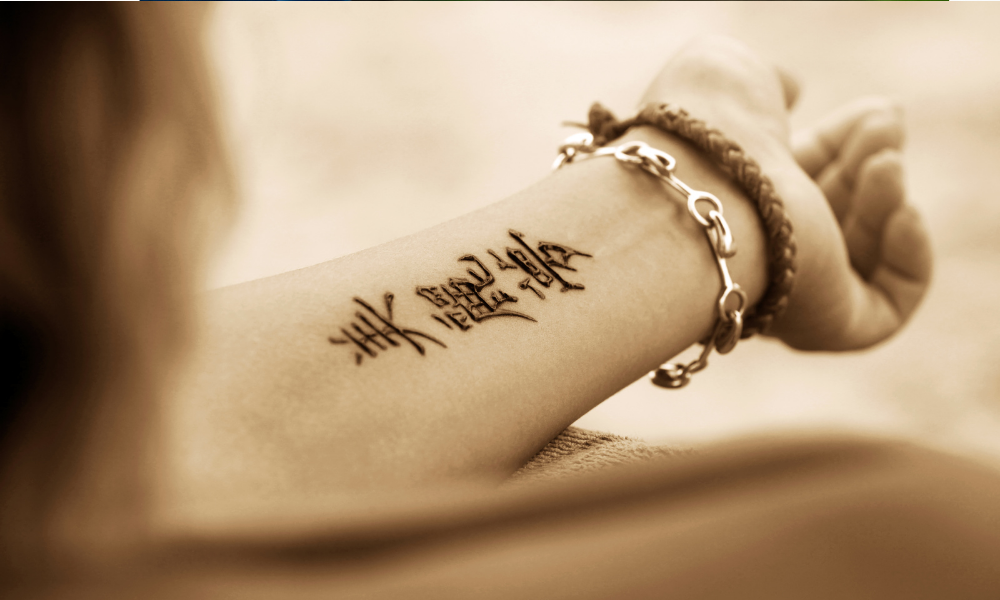
Tattoos often express feelings and ideas we don't talk about or acknowledge. They may seem trivial, but their meaning is quite profound. Body art sends signals about self-expression and can reveal something about us.
The relationship between body and art, the tangible and the imagined, is the source of tattoos. Memories, meanings and emotions vibrate through their colors, shapes and symbols. Above all, tattooing captures and displays unspoken aspects about past and present human connections.
Looking at the various stories they convey and their profound cultural importance, we realize that body art serves a symbolic purpose. This article will show that tattoos carry more than an individual, decorative purpose.Check it out!
African symbols for tattoo
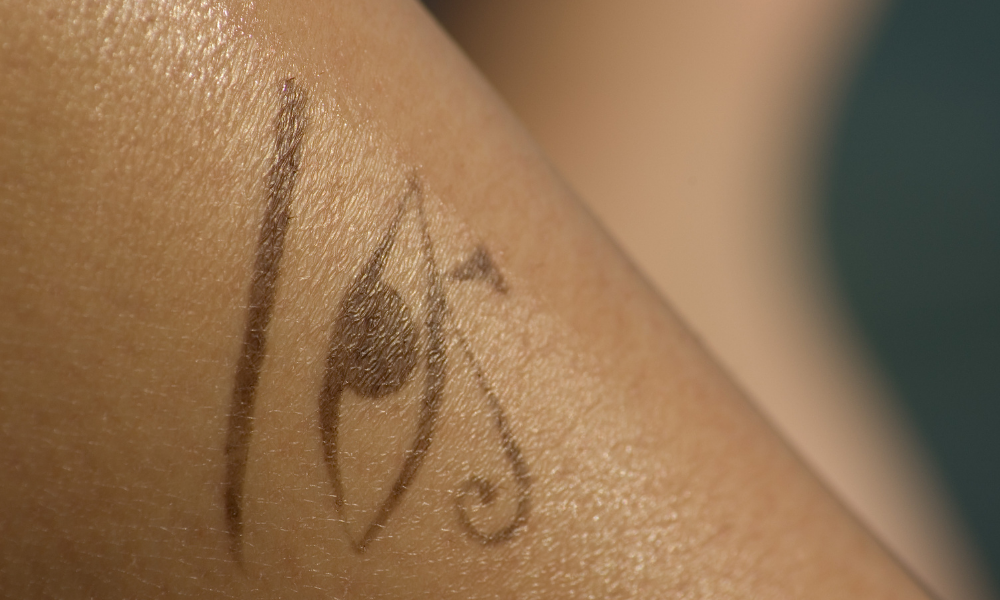
For millennia, African tattoos have been seen as treatments against disease, spiritual guards, and markets for tribal membership. If an individual is to maintain ties to their society, tattoo scarification is mandatory in many tribes in Africa.
Scar tissue produces a permanent wound pattern when a blade cuts the skin. The tribal chief's skin often serves as a canvas, representing the tribe's history.
Today, a healing process similar to the one known traditionally is used. The skin is cut and rubbed with ashes, resulting in a three-dimensional scar. Get to know some examples of African symbols for tattooing.
Ancient Egypt
The tattoo exists for millenniums and was performed in ancient Egypt since the Middle Empire, at least. In ancient societies, like Greece and Rome, it was used as a worship symbol to a specific deity, a mark that indicated servitude or a certain kind of vocation, to increase fertility or for protection.
Both men and women were tattooed in these societies, although in Egypt tattoos were presumably worn exclusively by the female sex. Interestingly, tattoos on Egyptian women were once considered a sign of lower status and a symbol for a dancer or prostitute.
West Africa
The African continent is known to be the source of tattoos. These symbols were used in Ancient Africa to represent social order and family, as well as to treat illness and ask for blessings. Many people looking for an Afrocentric tattoo are drawn to the ancient motifs of the Adinkra.
Adinkra symbols were first employed in West Africa to signify important proverbs, historical events and spiritual attributes, but although simple, they have enormous power and offer deep spiritual meaning.
African Lion
The lion is a powerful symbol in Africa. The significance of this animal in Lebu ceremonial activities indicates the repetition of such symbolism and is a very important representation for voodoo healers in Ghana.
Because of this, this bold and ferocious animal is one of the most popular African tattoo designs. The African lion is a symbol of wisdom, authority, courage, and protection and is often shown in a very realistic way.
Also, if you are looking for a more feminine portrayal, the African lioness tattoo can be used to represent motherhood, femininity, and lunar powers.
Celtic symbols for tattoo
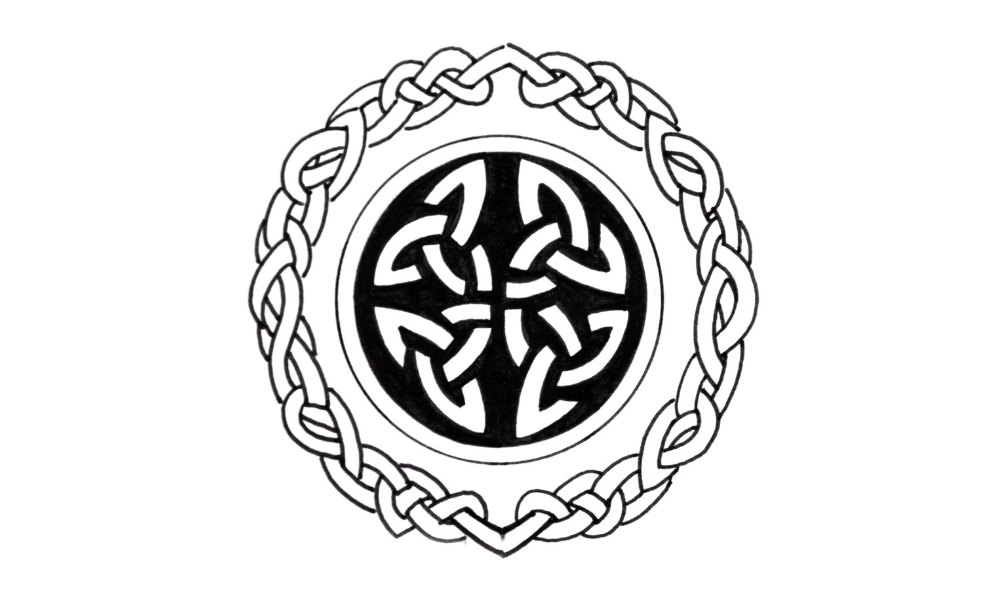
Celtic tattoos are considered one of the most popular tattoo designs. They consist of knots intertwined with other Celtic symbols that generally indicate life and vigor and can represent safety. Celtic warriors used to wear tattoos to intimidate their opponents, so the designs date back to ancient times.
Warrior tattoos are similar to the ancient Celtic tattoo designs we recognize today. Blue tattoos, for example, were worn by warriors to frighten their enemies. Now learn the meanings of the Celtic tattoos of knot shield, triquetra and single spiral.
Knot Shield
The Celtic knot shield is represented by a circle with the main design within it. This pattern is the only one that incorporates several classic knot types while resembling a shield. Soldiers used the knot shield as a good luck charm and to help those who were weak.
The symbolism of the Celtic knot shield tattoo is protection against evil spirits. This symbol protects its bearer in the same way a shield defends someone in combat. This tattoo would be worn with the intention of knowing that there is someone watching over you, whether it be God, loved ones, a higher power, or even the universe.
Triquetra
The three points of the triquetra signify the natural elements of earth, air and water to the Celts. It was also considered to represent life, death and rebirth on a spiritual level, in addition, the Holy Trinity (Father, Son and Holy Spirit) is associated with the symbol by Christians.
The many interpretations boil down to the same thing: the dots represent three independent but interrelated beings. The classic triquetra sign is sometimes accompanied by a circle, which is a symbol of eternity in many belief systems. As a result, this image is occasionally presented to symbolize eternal love or longevity.
Single spiral
The unique spiral is believed to have been used by the ancient Irish to represent the sun. In the occult and esoteric systems, it signifies the path to a higher level of consciousness, the pattern of growth and the use of nature's energy that induces, defends and sustains life.
According to mystics, the single spiral represents the consciousness of nature; beginning at the center and extending outward. Life, creation, birth and rebirth, evolution, consciousness and growth or development are all represented by this symbol.
The single spiral represents the radiance of cosmic energy, as well as wisdom and endurance; it is the ideal emblem for those who wish to progress.
Japanese symbols for tattoo
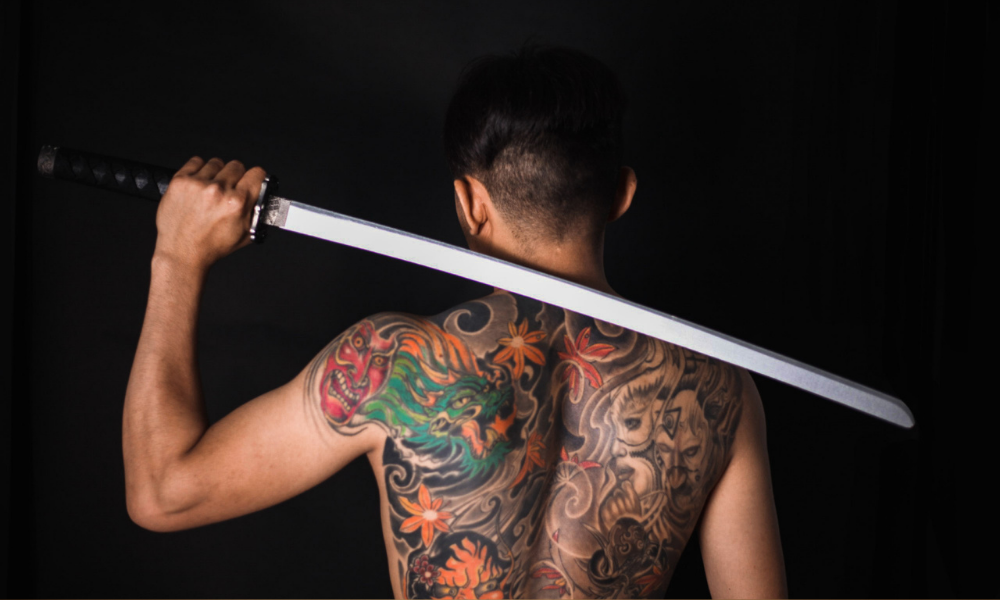
Irezumi, or 'ink implantation', is the name given to traditional Japanese tattoos. The Ainu people of northern Japan are famous for their traditional ink painting techniques. These tattoos were often used as identifiers of social standing or for decorative purposes.
Today, however, few Ainu dedicate their bodies to these types of art. Tattoos today have a negative connotation in Japan due to their association with criminal organizations. Members of the Yakuza - Japanese mafia - affirm their allegiance to the organization with full-body ink marks.
This has created a social stigma against tattooed people that persists to this day. Next, learn about Japanese tattoo symbols, their influences and history.
Turtle (Kame)
The kame - turtle in Japanese - is said to live up to 10,000 years and, alongside the dragon, phoenix and tiger, is one of the four heavenly guardians of Chinese mythology. The element of water, the yin principle, the north and the colour black are all represented by the kame.
The tortoise is also known as the "Black Warrior", a prehistoric god associated with shamanic periods and a strong representation of power, endurance and longevity. The tortoise is a symbol of wisdom in Japanese culture and is said to have healing energy. It, according to Japanese folklore, is a haven for immortals and represents good luck and assistance.
Lions (Komainu)
The culture of Japan encompasses many elements, all motivated by meaning and belief. This is seen through the creatures and spirits that the Japanese believe lead them in their daily activities. An example of these creatures is the Komainu, which is a hybrid of two animals: the lion and the dog.
Komainu is a defender of sacred objects that is also connected to the beginning and the end of all things. People, usually choose a tattoo with Komainu because they believe it is a symbol that will protect them from danger at all times.
Oni Mask
Japanese mythology is marked by artwork, moving images and a variety of magical figures. These belief systems, particularly in the tattoo industry, provide an endless amount of inspiration.
The Oni Mask is one of the most popular Japanese tattoo designs. Generally, those who get this tattoo want to send a message that they are "not to be trifled with." Oni Mask tattoos can be worn to ward off bad luck or to protect from unknown entities. In addition, they can also be a way to confront your flaws or dark side.
Snake
The snake has many meanings in traditional Japanese tattoos and performs several important functions such as protection from disease, tragedy and bad luck.
Snake tattoos also symbolize luck, wisdom and protection, especially against the consequences of wrong actions. This animal can represent good health, regeneration, healing and medicine, as it has been associated with medical rituals and cures in Japanese culture.
In addition, it symbolizes the Divine Feminine, or sacred female characteristics. Formerly, in Japanese culture, it was assumed that a woman could acquire the beneficial characteristics of a man in the same way that a snake loses its skin.
Native American symbols for tattoo
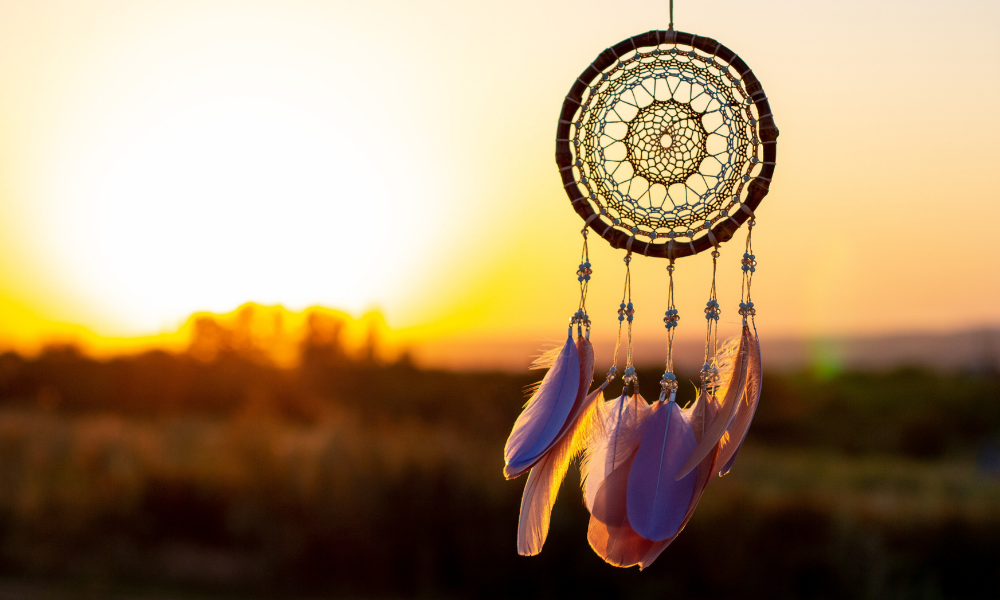
Native American tattoos are far from a passing fad. They have a long and important history in Native American civilizations, stretching from Alaska to the southern tip of South America.
Depending on the tribe, tattoo art was a different spiritual practice in Native American civilization. To mention a few reasons, this sacred ceremony was used to protect, defend, heal, and convey status and accomplishments.
In addition, before colonization spread across North America, various cultures employed traditional tattoos and body alterations to represent family ancestry, clan crests, social standing, territorial relationship, hunting or fishing privileges, and other things. Learn what the most famous Native American symbols for tattooing are below.
The dream catcher
Dream catchers are objects related to sleep and are used to protect people from unpleasant dreams and negative ideas. They are lovely pieces with a lot of symbolic value.
It's easy to understand why a tattoo like this, which symbolizes protection, can attract someone. The talisman, which has become a popular body art choice, helps people filter out negative ideas and focus on positive ones.
Some individuals prefer to keep the original design, which has Native American roots, with feathers or beads to their pieces. Others choose to combine various components, emphasizing colors or adding other pieces.
Bears
The bear is a representation of perseverance, strength and courage. Moreover, this animal establishes a direct link between people and nature. From Asian mythology to North American and European civilizations, it is part of folklore and traditions all over the world.
The bear, as a mystical animal in Native American culture, is a great example when it comes to balancing strength and power. The bear spirit also advises us to be open-minded, be prepared to try new things, and seize opportunities when they arise.
Bulls
Bull tattoos are quite popular among men because they symbolize power. In addition, the designs of this animal are also closely linked to spirituality, power, strength, fertility and nature.
This design is famous because it gives the impression that people are always up for a challenge, and it's no wonder that American sportsmen are in the habit of tattooing it.
Tribal bull tattoo designs are linked to all kinds of cultures. On the other hand, the animal's skull is one of the most recurring tattoo patterns in Native American culture as it denotes life and wealth.
Viking symbols for tattoo
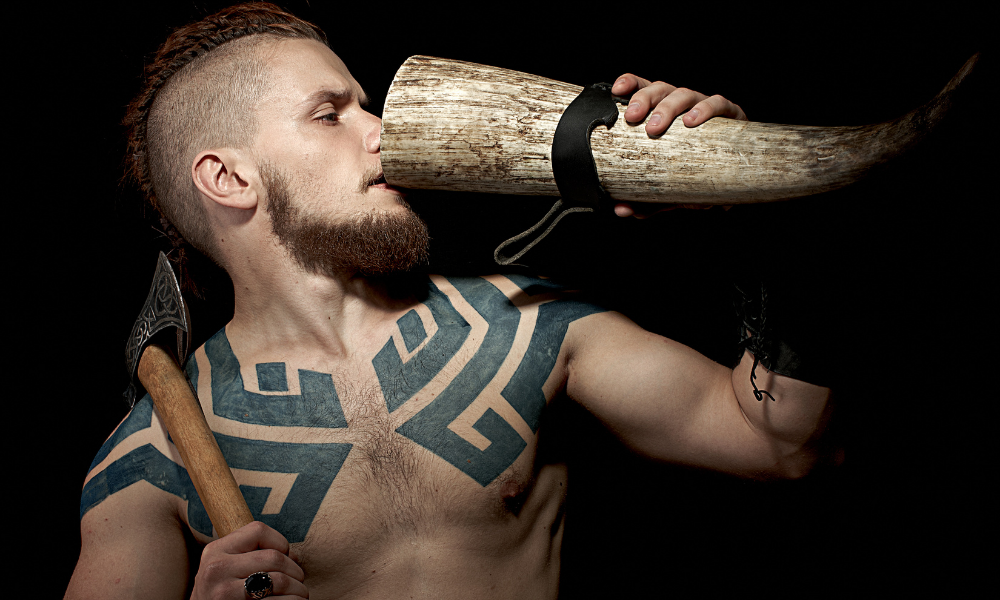
According to legend, Vikings had tattoos from fingers to neck. Old Norse representations, assorted knot designs and dark green tree emblems are some examples.
No one knows for sure what representations, patterns or motifs the Vikings employed in their tattoos, but it is possible that they incorporated symbols from Norse mythology and ancient designs seen in their jewelry, bone carvings, boats and other objects.
Viking tattoos are very popular these days among people of Nordic descent who wish to show their pride by having them tattooed on their bodies. Others opt for Viking tattoos because they are fascinated by Norse mythology, culture, and beliefs. Below, understand the stories behind the main Viking tattoos.
Huginn and Muninn (raven)
Legend has it that Huginn and Muninn, Odin's twin ravens, used to fly around the world bringing news to him. While Huginn represented the mind, Muninn symbolized memory. These ravens are believed to be manifestations of Odin's consciousness.
Huginn and Muninn are symbols of wisdom and intelligence, as well as protection from those who might harm you. Additionally, in various cultures around the world, ravens are birds that symbolize death and custody, so they can be used to honor those who have passed away or offer advice for the afterlife.
The Helm Of Awe
The Helm Of Awe - The Helmet of Awe or Helmet of Terror - is worn by the Norse peoples as a pre-Christian emblem. It is one of the most powerful representations of their mythology, as it symbolizes protection.
Before going into battle, many Viking warriors would paint or tattoo The Helm Of Awe on their foreheads, between their eyes or on their arms, thinking it would protect them, make them invincible and generate dread in their enemies.
Furthermore, according to some sources, if this symbol was applied correctly, it granted the person wearing it the ability to become completely invisible.
The Valknut
The Valknut - also known as the Heart of Hrungnir, Knot of the Dead Warriors and the Heart of Vala - is a mysterious Norse symbol formed by three intertwined triangles. The word Valknut means "knot of those who fell in battle" and originates from the Norse words valr "dead warriors" and knut "knot".
The symbol has been found on various runic stones and carved into artifacts found in Viking ship tombs, so it is often related to death in battle and the mythological representation of Odin. Valknut is an emblem of death that has the power to hasten the passage of the dead to eternal life.
Can the power of symbols act on tattoos?
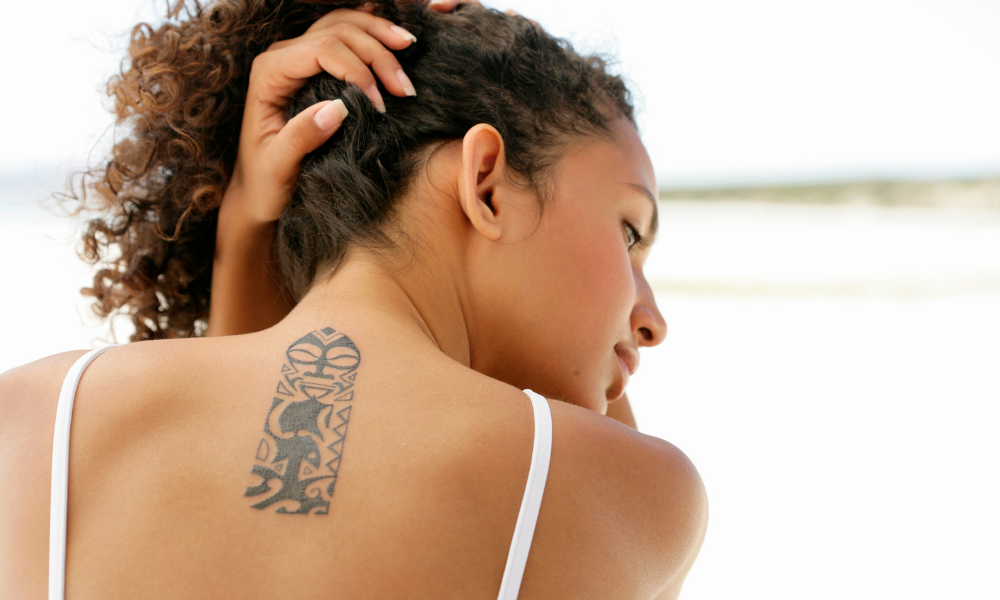
Tattoos can have profound meaning: serving as a lasting reminder of something significant or as a permanent memory of an experience that cannot, or should not, be forgotten.
Often, tattoos can give people a sense of empowerment or serve as a memory of something they have accomplished. Sometimes, the meaning behind tattoos is evident, we can imagine success not only in the design, but also in the feeling it generates.
However, there are also confusing and delicate stories within the chosen design. Some have meaningful symbols or talismans, while others have hues that stir the emotional, and still others are so spiritual that the meaning is deep and multifaceted. Either way, symbols are able to influence tattoos in precise and even emotional ways.

